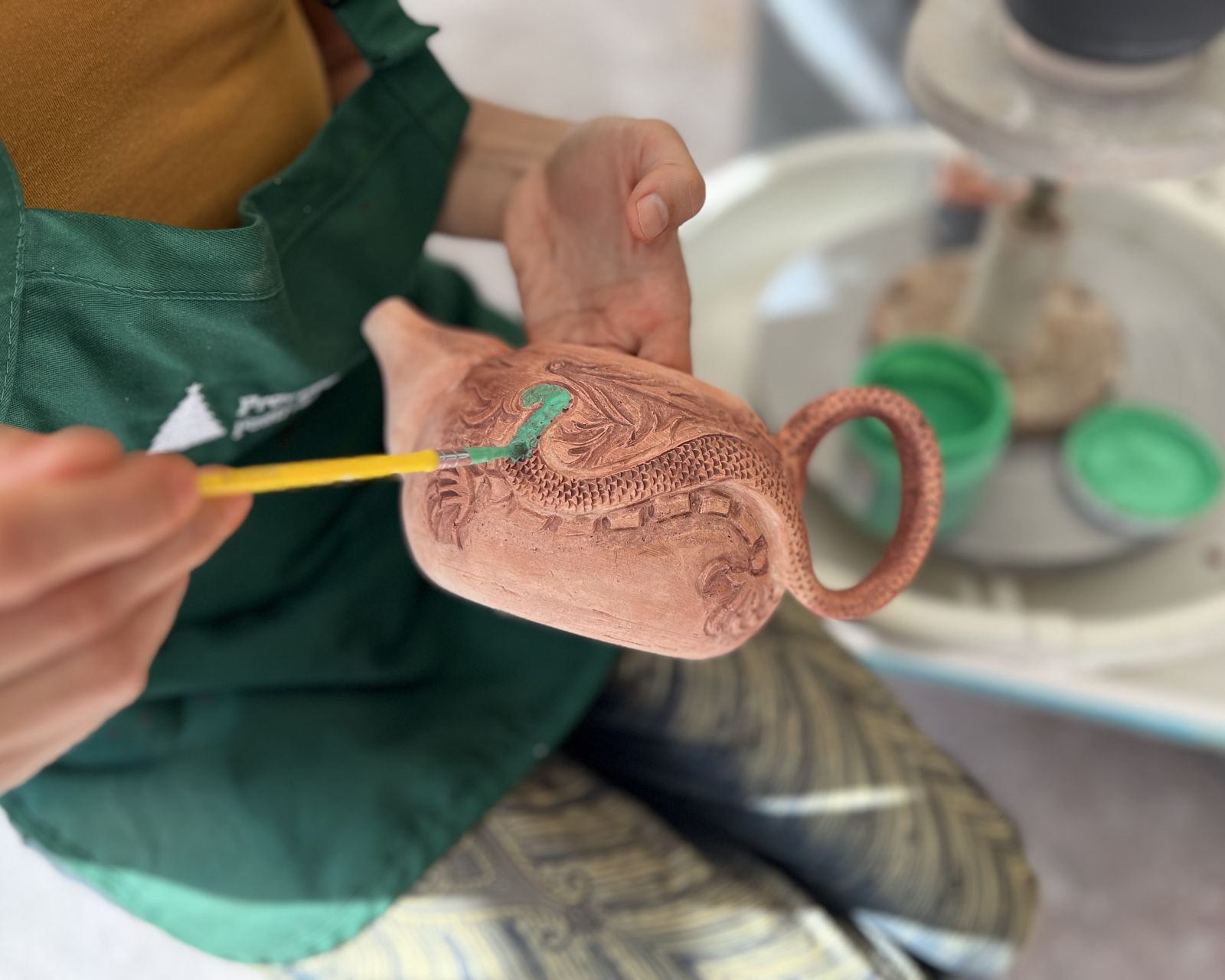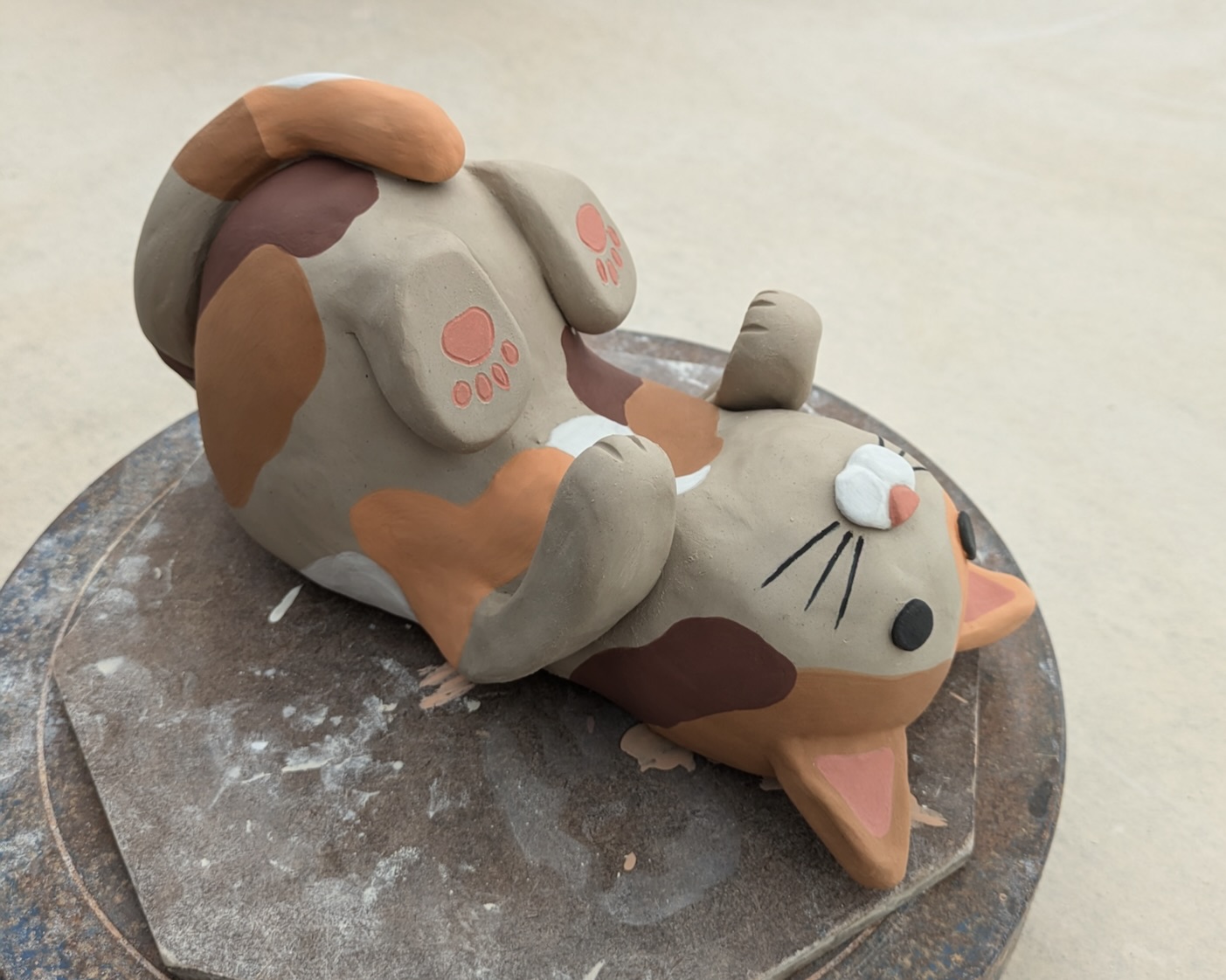
Description: Hawai‘i Triennial 2025 (HT25), the state’s largest, thematic exhibition of contemporary art, opens across more than a dozen sites of exhibition and programming. Bringing together the works of 49 artists and art collectives from Hawai‘i, the Pacific, and beyond, HT25 will be on view at art spaces and public venues across O‘ahu, Maui, and Hawai‘i Island from February 15 to May 4 and at the Donkey Mill from March 22 to June 28, 2025.
Curated by Wassan Al-Khudhairi, Binna Choi, and Noelle M.K.Y. Kahanu, HT25 considers local-global dialogues through a Hawai‘i- and Pacific-focused lens. Entitled ALOHA NŌ, the exhibition challenges commonly held notions of aloha, reclaims it as an active cultural practice, and situates it as a transformative power that is collectively enacted through contemporary art.
More information about HT25 can be found at hawaiicontemporary.org and in the HT25 Guidebook.
Exhibiting Artists: Sonya Kelliher-Combs, Citra Sasmita, Kanitha Tith
IMPORTANT DATES
- Exhibition on View: March 22 - June 28, 2025
- Potluck Lunch and Artist Talk with Citra Sasmita Thursday, March 20 from 12:30 - 2:00pm
- Creative Outlet: Portable Secrets Workshop with Sonya Kelliher-Combs: Thursday, March 20 from 5:30 - 8:30pm
- Opening Reception: Saturday, March 22 from 5:00 - 8:00pm
- Artist Talk with Sonya Kelliher-Combs: Thursday, March 27 from 5:30 - 7:30pm
About the Artists
Sonya Kelliher-Combs (Iñupiaq and Athabascan) is a mixed-media artist whose family hails from the Alaska North Slope community of Utqiagvik and the interior village of Nulato. Her family, cultures, and relationship to the land influences all that she does. Growing up in a rural community, she observed and practiced time-honored traditional women’s and collective labor — skin sewing, beading, and food preparation — that taught her to appreciate the intimacy of intergenerational knowledge and material histories. This collective knowledge deeply informs the materiality, symbolism, and structure of her artistic practice.
Citra Sasmita is a contemporary artist from Bali, whose work focuses on unraveling the myths and misconceptions of Balinese art and culture. She is also deeply invested in questioning a woman’s place in the social hierarchy and seeks to upend the normative construct of gender.
A self-taught artist, Sasmita joined the campus theater group and became a short story illustrator in Bali Post. In one of her long-term projects, Timur Merah Project; Harbor of Restless Spirits, was presented in Garden of Six Seasons, Para Site, a painting on cow’s hide reflects the Kamasan Balinese painterly language that Citra has been developing in her practice. It represents a geography of female figures, fires, and various natural elements, composed whimsically in an unfolding of pansexual energy. While rooted in mythological thinking with Hindu and Balinese-specific references, the scenes are equally part of the contemporary process of imagining a secular and empowered mythology for a post-patriarchal future.
Kanitha Tith’s art practice engages with laborious, meditative and repetitive processes in pursuit of a feeling of freedom. She works across several artistic media, making sculptures, installations, performances, videos, and works on paper. Tith often draws on personal experiences, as well as collective memory of Cambodia’s troubled modern history, translating these complex issues into a gentle language of organic abstraction.
About the Curators
Wassan Al-Khudhairi is a curator and writer currently based in Honolulu, Hawai‘i. Most recently, she served as the Ferring Foundation Chief Curator at the Contemporary Art Museum St. Louis, where she organized exhibitions and new commissions with artists including Hajra Waheed, Dominic Chambers, Gala Porras-Kim, Martine Gutierrez, Derek Fordjour, Stephanie Syjuco, Paul Mpagi Sepuya, Bethany Collins, Lawrence Abu Hamdan, Guan Xiao, Hayv Kahraman, and others. She co-produced the Radio Resistance podcast, which accompanied the publication and exhibition Stories of Resistance, a thematic group exhibition featuring over 20 artists. Al-Khudhairi was co-curator of the 6th Asian Art Biennial in Taiwan (2017) and co-Artistic Director for the 9th Gwangju Biennial in South Korea (2012). As the Hugh Kaul Curator of Modern and Contemporary Art at the Birmingham Museum of Art, she organized the museum’s first large-scale exhibition of its contemporary collection, Third Space: Shifting Conversations About Contemporary Art. She also served as the Founding Director of Mathaf: Arab Museum of Modern Art in Qatar, where she oversaw its opening in 2010. There, she co-curated Sajjil: A Century of Modern Art and curated Cai Guo-Qiang: Saraab.
Binna Choi has served as the director at Casco Art Institute: Working for the Commons, Utrecht, in the Netherlands since June 2008. Under her directorship, Casco has been exploring the commons as an alternative to binary worldviews and systems through and for art, taking it for their organizing guideline. Her key curatorial-collaborative projects at Casco include Grand Domestic Revolution (2009–2012), Site for Unlearning (Art Organization) (2014–2018), Travelling Farm Museum of Forgotten Skills (2018–ongoing), alongside engagement with networks like Arts Collaboratory and Cluster. Choi served as co-artistic director for Singapore Biennale 2022, named Natasha, and curator for the 11th Gwangju Biennale, titled The Eighth Climate (What does art do?). As a member of Academy of the Arts of the World in Cologne, Germany, she curated the exhibition project Gwangju Lessons (2020), which traveled to the Asia Culture Center in Gwangju, South Korea. Choi is also part of the faculty of Dutch Art Institute and an advisor for Afield.
Noelle M.K.Y. Kahanu (Kanaka ʻŌiwi/Native Hawaiian) is a 15-year veteran of Bishop Museum in Honolulu, where she developed scores of exhibitions and programs. She worked on the major renovations of Hawaiian Hall (2009) and Pacific Hall (2013), as well as the landmark E Kū Ana Ka Paia: Unification, Responsibility and the Kū Images exhibition (2010). She has a law degree from the University of Hawaiʻi at Mānoa and previously served as Counsel to the U.S. Senate Committee on Indian Affairs in Washington, D.C., where she worked on issues affecting Native Hawaiians, American Indians, and Alaska Natives. She is currently an associate specialist in Public Humanities and Native Hawaiian Programs in the American Studies Department at University of Hawai‘i at Mānoa. Her current research and practice explore the liberating and generative opportunities when museums “seed” rather than cede authority.




